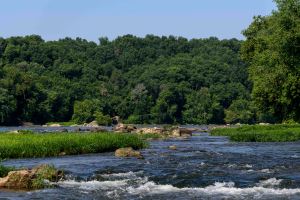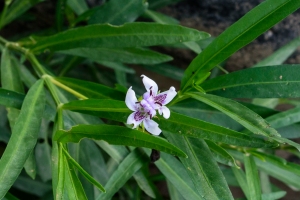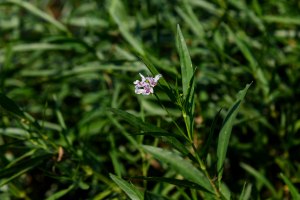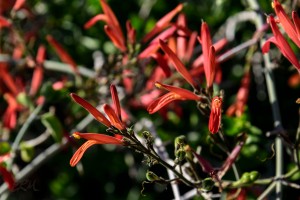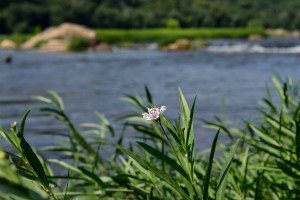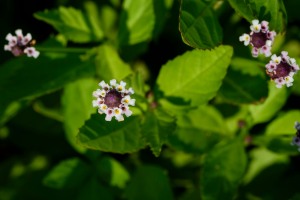There’s something refreshing about seeing all these green, grassy-looking plants growing right in the Potomac River every summer. They aren’t grasses, though; they’re water willow (Justicia americana; Acanthaceae), an emergent aquatic whose rhizomes form vast stands of plants in the shallow waters of ponds and streams.
 The plants will grow to as much as three feet tall, sending up long stems with tight clusters of flowers on the ends. Only a few stems at a time will bear flowers, but the blooming period of a colony can last two months or more.
The plants will grow to as much as three feet tall, sending up long stems with tight clusters of flowers on the ends. Only a few stems at a time will bear flowers, but the blooming period of a colony can last two months or more.
Water willow is native to eastern North America, ranging from Texas and the eastern Great Plains northeastward to New York, Ontario, and Quebec. It’s endangered in Iowa and threatened in Michigan.
Of the roughly dozen and a half species of Justicia found in North America, this one is by far the most northern species. One other occurs in the southern part of the Mid-Atlantic, and one in the Mid-West; the rest seem to be found only in Florida, Texas, or the Southwest.
Last spring I found the closely related Justicia californica in Anza-Borrego Desert State Park; it grows as a shrub or tree in the Sonoran and Mojave Deserts.
Hard to believe they’re in the same genus.

